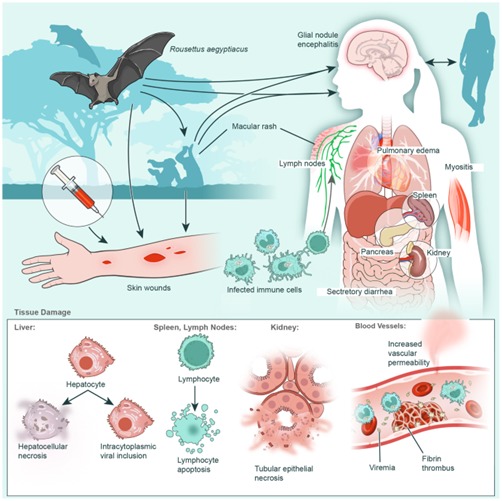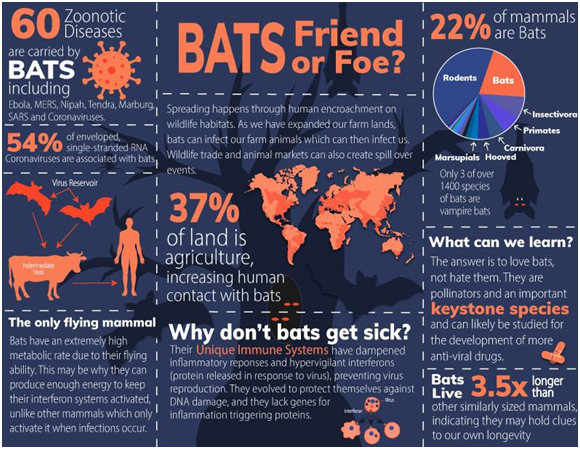Marburg virus outbreak
Context: Equatorial Guinea and Tanzania reported outbreaks of Marburg virus disease (MVD), The Marburg virus was first identified in 1967 during outbreaks in Germany and Serbia and is known to cause severe and fatal viral haemorrhagic fevers in humans.
About the virus
- The virus is closely related to another deadly virus, Ebola and is rated as a high-risk pathogen by the WHO.
- Marburg virus is transmitted to humans through contact with infected animals such as fruit bats, and further human-to-human transmission can occur through direct contact with the bodily fluids of an infected patient or contaminated surfaces resulting in outbreaks.
- It was first detected in 1967, several outbreaks of Marburg virus have been detected between 1975 and 2023, with African countries being the most affected and often with high fatality rates up to 90%, depending on the early access to quality care.
- In recent years, and for the first time, isolated cases have been reported in Guinea and Ghana in 2021 and 2022.
Resurgence
- An outbreak of unknown haemorrhagic fever linked to a funeral ceremony was reported from Equatorial Guinea in February which was later confirmed as Marburg virus by the WHO.
- A month later, Tanzania reported an outbreak of MVD after the detection of eight suspected cases, five of which were fatal.
- The genome sequence of a Marburg virus from Equatorial Guinea was quickly made available in public domain by researchers. The sequence shows high similarity with Marburg virus genomes previously found in fruit bats, suggesting a potential zoonotic origin.
Is there a concern?
- There are no approved vaccines, antivirals or monoclonal antibodies for Marburg virus yet and supportive care to manage symptoms and prevent complications forms the mainstay.
- Nonetheless, the WHO aims to accelerate trials of some investigational vaccines. Case detection through contact tracing, molecular diagnosis and quarantine is central to managing the spread of the disease.
- While the two outbreaks have triggered a rapid response to control the spread, the outbreak in Equatorial Guinea has spread to multiple provinces and has even crept into a populous city, Bata.
- Equatorial Guinea has, so far, reported a total of 35 confirmed cases and 27 deaths. The large geographic spread of the infection in the country and the unidentified epidemiological links between many of the reported cases suggest a wider range of transmission of the virus.
Surveillance
- As the affected countries continue to make efforts to contain the disease and another country, Burundi, investigates a suspected outbreak of viral haemorrhagic fever, surveillance of emerging viral diseases is crucial to help early detection, monitoring the circulation and evolution, and develop effective diagnostics, prevention and control measures. It is only natural that the concept of One Health is increasingly taking centre-stage.
| Practice Question
1. Describe the concept of one health approach? How can it help in fighting war against virus based diseases? |





